A guitar is a relatively simple musical instrument that became more complex as the years passed. This isn’t necessarily a bad thing, but some parts may require clarification. I made a list of every part of the guitar together with some explanations and interesting facts. At the end of this post, you’ll find a few guitar parts diagrams containing every part of the Acoustic, Classical, and Electric guitar that will help you understand where every part goes. Enjoy!
Table of Contents
All Parts Of A Guitar
Here I go over all of the parts of a guitar. Some are exclusive to electrics, some to acoustics, and some to classical guitars. Most of them are used in all types of guitars (and guitar-style instruments). I did my best to sort them from the headstock all the way down to the body, but some of them are at the same height (such as the neck and fretboard), so bear that in mind. When in doubt, check the diagrams below.
Headstock (Peghead)
The headstock is the top part of the guitar, where the tuning pegs are. They are divided into three main groups: Straight, Tilted back, and Scarf neck. Most of the time, the headtock and the neck are made of the same piece of wood, except for scarf necks, which is made of two pieces of wood glued together for additional strength. It may sound a bit odd, but the headstock significantly impacts the sound and sustain of a guitar. The tougher the headstock is, the less vibration it will absorb from the strings, resulting in longer sustain and richer harmonics.
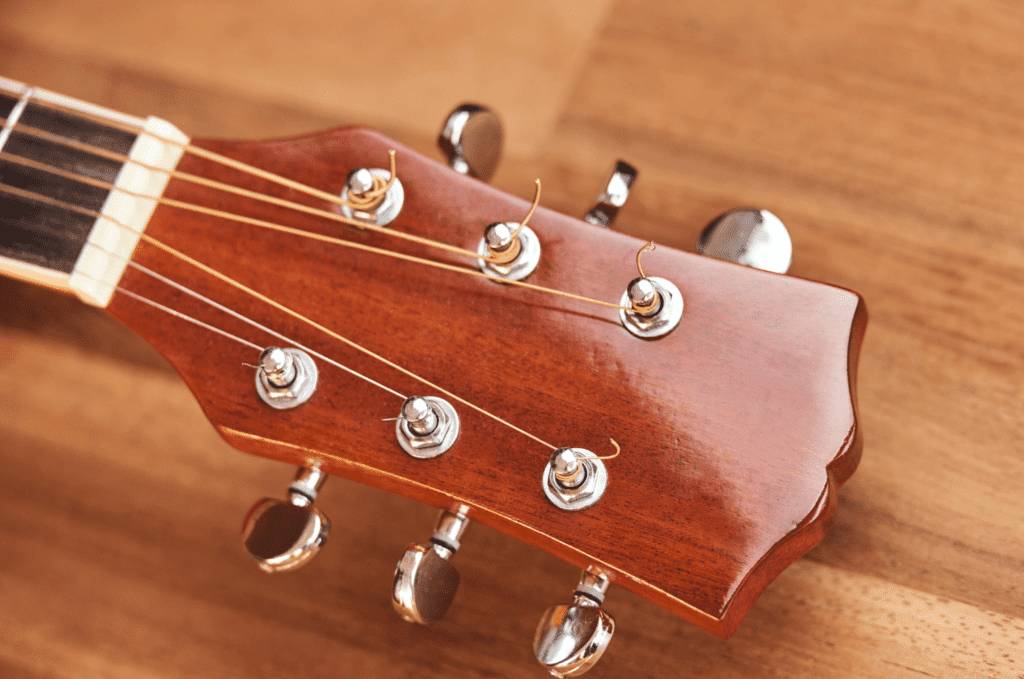
Tuning keys (Tuning pegs, Machine heads)
The tuning keys are used to tune your guitar. A few different types of tuning pegs include Sealed tuning pegs (most common), Lock-in tuners, Closed / Open back vintage tuners, Side-mounted tuners, and staggered posts. Another thing to consider when looking at tuning pegs is their Aspect Ratio, which is responsible for tuning stability and accuracy. Upgrading your tuning pegs is probably one of the first guitar upgrades you’ll do. But bear in mind that each type of guitar has different tuners. Classical guitar tuners are different from acoustics, which are different from electrics.
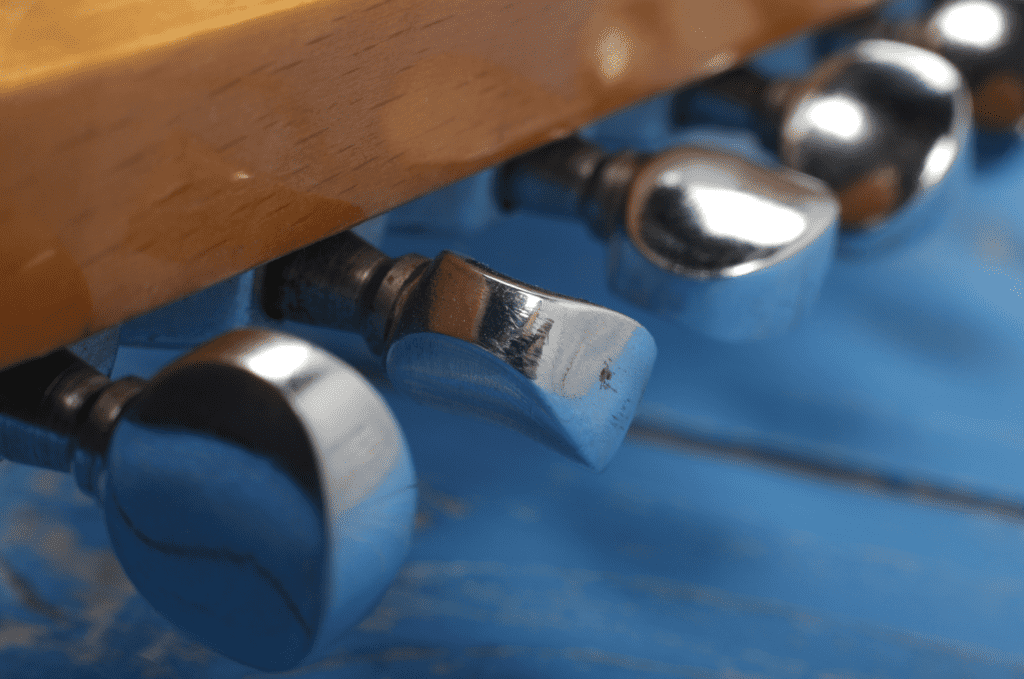
String trees
String trees are the little metal pieces you can find on some headstocks and have two main jobs. One of them is to guide the strings into the nut slots (so they won’t have an angle when approaching the nut). And the other is to enhance the sustain when playing open strings. There are three main types of string trees: Butterfly (most common), Barrel/Roller, and Round/Disc.

Truss rod
The truss rod controls the curvature of the neck. It is used to strengthen the neck to compete with the string’s tension. There are three types of truss rods: Single-action truss rod, Dual action truss rod, and non-adjustable truss rod. A single-action truss rod counts on the string’s tension to create the desired curve. It’s working against it to create a balanced curve. A Dual action truss rod works both ways and can curve the neck in any direction, with or without the string tension. A Non-adjustable truss rod is pretty much exactly as it sounds. You can find it on very cheap entry-level guitars.
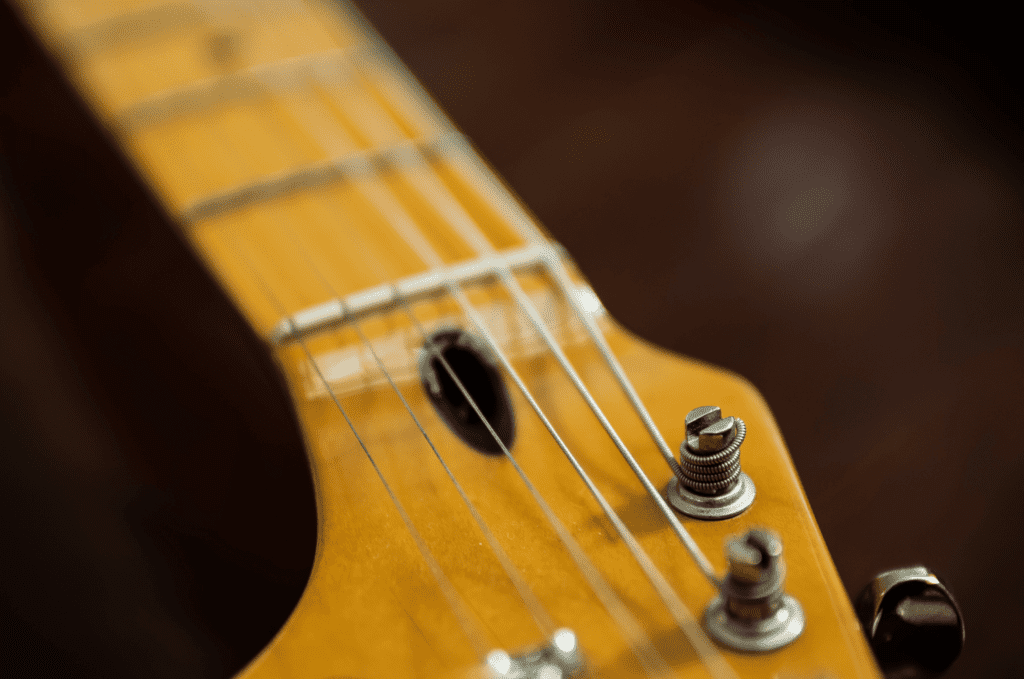
Nut
The guitar nut often gets a lot less credit than it deserves. Acting as the string’s last point of contact before they get over the fretboard. The nut is responsible for proper and even spacing between the strings.
There are many different types of guitar nuts, and some of them are Standard nut (most common), Compensated nut, Locking nut, Roller nut, and a Zero fret (that got a bad reputation for no good reason, but that’s a story for another day). The guitar nut can be made out of many different materials. Each of which has a different impact on the sound, sustain, and maintenance required during a guitar setup. Some examples of nut materials are Plastic, Bone, Graphite, Ebony, Metal, and Fossil Ivory. Upgrading the nut alone on an acoustic guitar has a massive effect on the tone. And it is one of the most cost-effective guitar upgrades.

Neck
The guitar neck (not to be confused with the fretboard) is a piece of wood located below the fretboard and between the guitar body and the headstock. A guitar neck can come in many shapes (usually called a “Neck profile”). Some of them are C shape (most common), V shape (vintage), U shape, D shape, and Asymmetrical. The guitar neck can be made out of many different types of tonewood. Here are some of the most common tonewood for guitar necks, sorted from the mellowest to the brightest: Rosewood, Mahogany, Basswood, Alder, Koa, Swamp Ash, Walnut Wenge, and Maple.
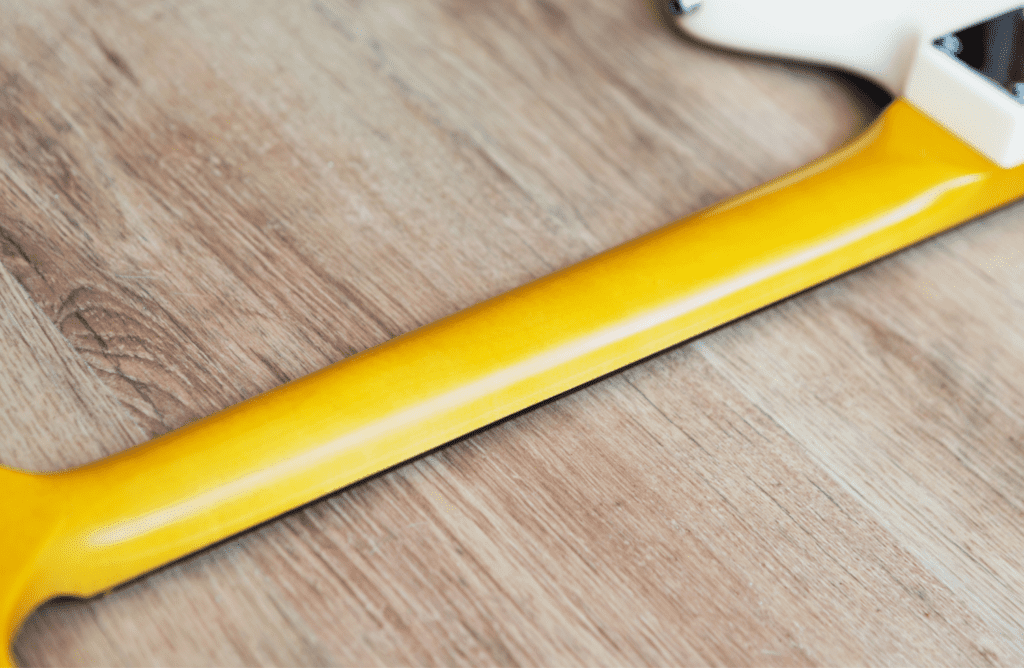
Fretboard (Fingerboard)
The fretboard is the part where the frets are (I bet you didn’t see that one coming, huh?), and is usually glued to the guitar neck. Sometimes, the neck and fretboard are the same piece of wood. Similar to the neck, the fretboard can also be made out of different wood species. Each has some unique tonal characteristics and appearance. Common wood types for fretboard include Ebony, Maple, and several types of Rosewood.

Frets
Frets are the metal “strips” on the fretboard. When a string is pressed, they control the note you’re playing. The frets come in different variations (sizes), and each design differs from the others by width and height. Common fret sizes are (sorted by width from narrow to wide): Vintage 6230, 6105, Vintage Jumbo 6150, Medium Jumbo 6130, and Jumbo 6100. Each fret size has different advantages and disadvantages regarding playability and intonation.
Position markers (inlays)
The Position Marker’s job is you help the player navigate on the fretboard. They are often inlaid on top of the fretboard (sometimes on the side, facing the player) and are used to mark the positions on the fretboard. They are usually found on the 3rd, 5th, 7th 12th, 15th, 17th, 19, 21st, and 24th frets. Although they serve the function of guiding the player on the neck, some manufacturers are taking an artistic view of their design. They are making the position markers from different materials and in different shapes. Materials include Plastic, Pearl, Bone, Wood, Gemstones, Stickers, Clay, and even a glow-in-the-dark material called Luminlay. Shapes include Dots, Rhombuses, Parallelograms, Isosceles Trapezoids, Shark fins, Rectangles, and PRS’ recognizable Birds.
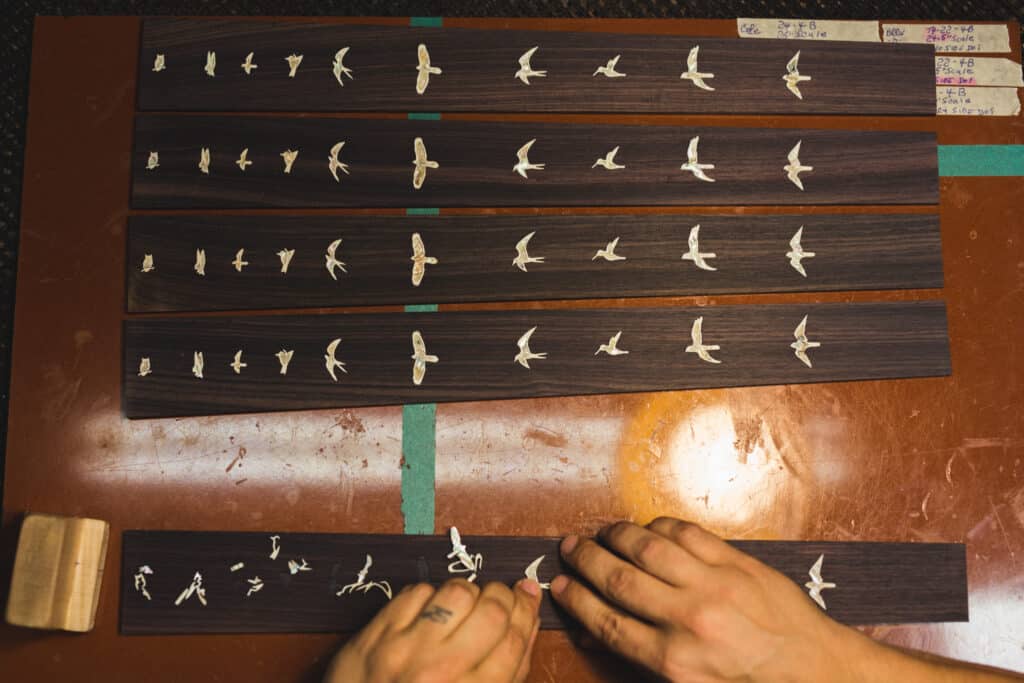
Strap buttons
The strap buttons of a guitar are the places where you connect your guitar to the strap. There are usually two of them, one at the bottom of the body and another one on the other side of the body, either on the side or just behind the neck joint. Some Classical and Acoustic guitars come with just one strap button, on the bottom of the body (farthest away from the headstock). In that case, the other side of the strap is placed beneath the strings, between the nut and the tuning pegs.
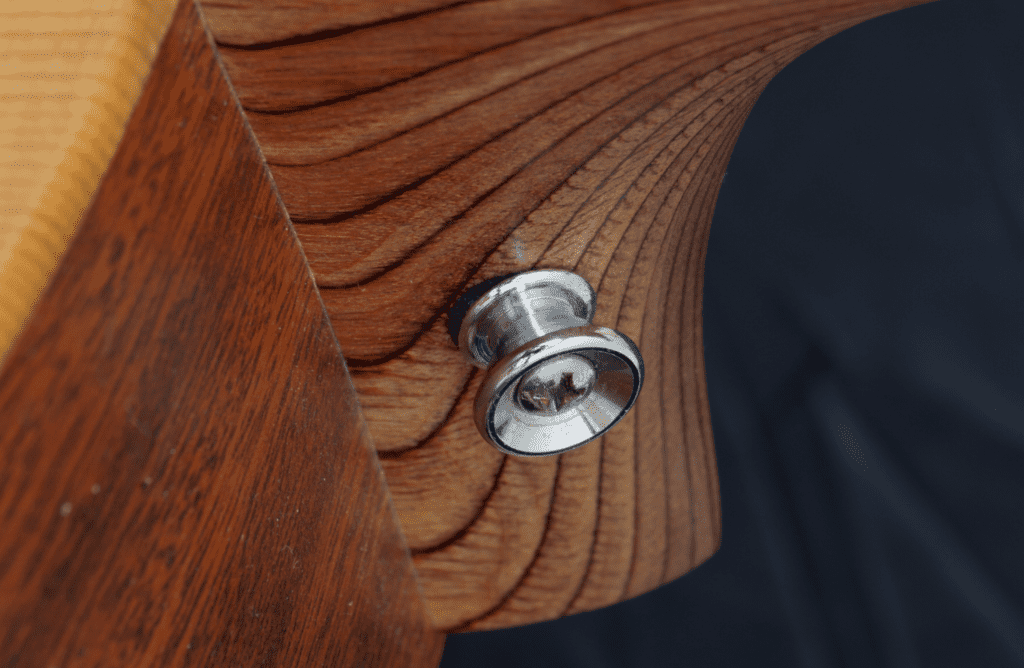
Body
The body of a guitar is the centerpiece that everything revolves around. In Acoustics and Classical guitars, this is the part responsible for the amplification. Whether in electrics, this is where the pickups, wiring, knobs, and switches are. In most cases, the body is the most recognizable part of a guitar. Some of the most well-known body shapes of electric guitars are the T-shape, S-shape, SG, 355, Les Paul, V, and Explorer. Well-known Classical / Acoustic guitar shapes are Dreadnought, Parlour, Jumbo, Auditorium, and Classical.
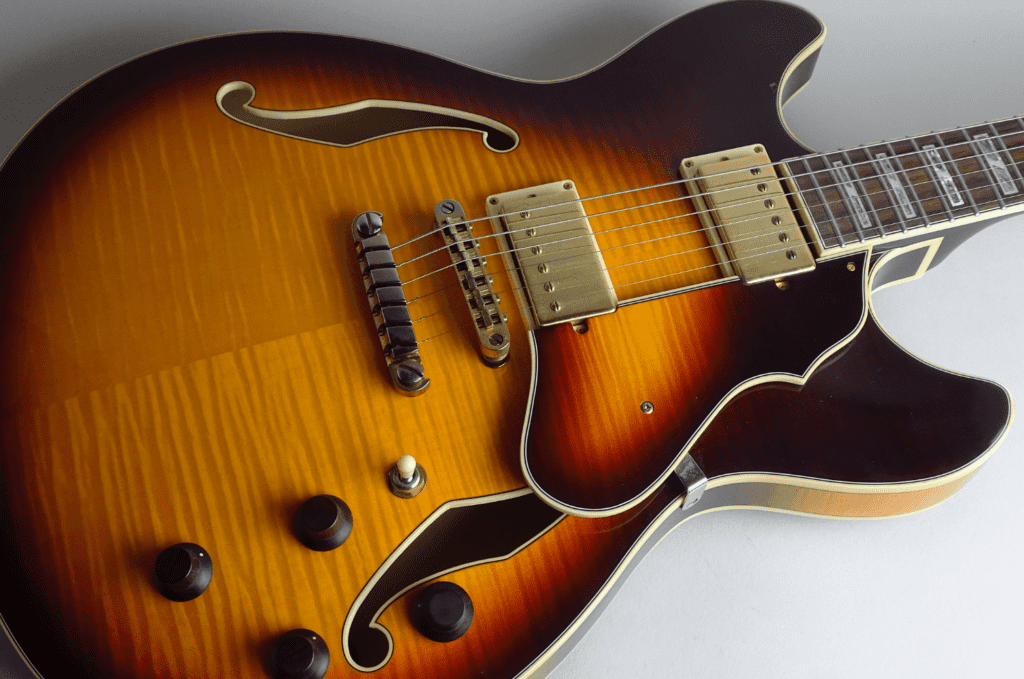
Pickguard
The pickguard is a protective piece of plastic that supposed to protect the body from aggressive picking. Although it’s a relatively simple part of the guitar, its placement made it one of the most modified parts of the guitar, with a lot of boutique artists making custom pickguard designs. It is one of the cheapest. and most effective ways to upgrade the looks of a guitar.

A T-Style Guitar With A White Pickguard 
An Acoustic Guitar With A Celluloid Pickguard 
An S-Style Guitar With A White Pickguard
Soundhole
The soundhole is the acoustic version of the electric guitar’s output jack. This is where the sound is coming from after it was amplified inside the body. There are some different soundhole designs, and boutique luthiers are constantly coming up with even more of them. Some electric guitars (hollow and semi-hollow) also have a soundhole. In that case, it’s usually shaped like a violin’s soundhole,in the shape of an F, named: F hole. Some examples of creative soundhole designs are Ovation’s leaf holes, the Kasha Guitar with the soundhole often placed off the center of the body (close to the player), and some guitars even have it on the side of the body, favoring the player over the audience.
Rosette (Soundhole Decoration)
The rosette is a ring-shaped decoration around the soundhole, that also plays a role in reinforcing its structure. On cheaper acoustic or classical guitars, the rosette is purely decorative, and most likely painted or pasted before the finish is applied. On high-end and luthier-made guitars, a rosette is a place where the maker can show off their skill, as it’s considered one of the most complicated guitar parts to craft. It often contains different species of wood, pearls, and mother of pearl, assorted in complex patterns.
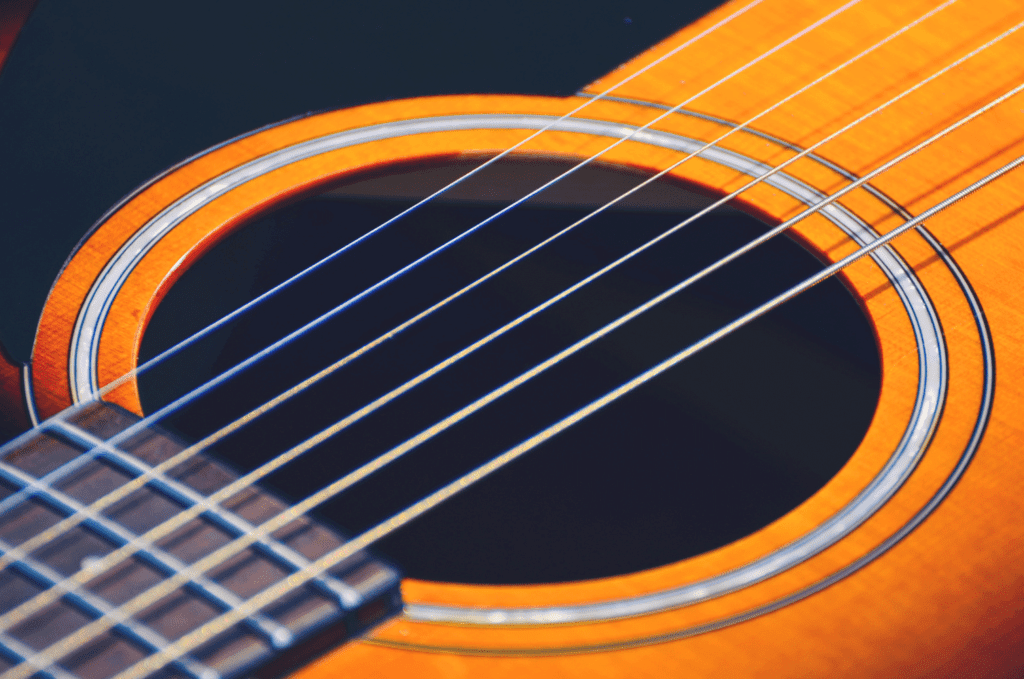
Pickups
Most pickups are made of a metal wire wrapped around magnets and are used to amplify electric guitars. They act as a microphone, but instead of responding to a voice through the air, they respond to the metal strings’ magnetic field vibrating in front of them. There are many different types of pickups , including Single coil, Humbucker, P90, and Lipstick. Additionally, there are similar designs of pickups for acoustic guitars, that players install on the soundhole.

Humbucker Pickup 
Single Pickup
Pickup selector switch
Most electric guitars have more than one pickup, creating the need for a switch that allows the player to select which pickup they want to use at each point. Most three-pickup guitars have 5 different pickup positions and most two=pickup guitars come with 3 positions. Each position is either activating one pickup or any sort of combination between them.
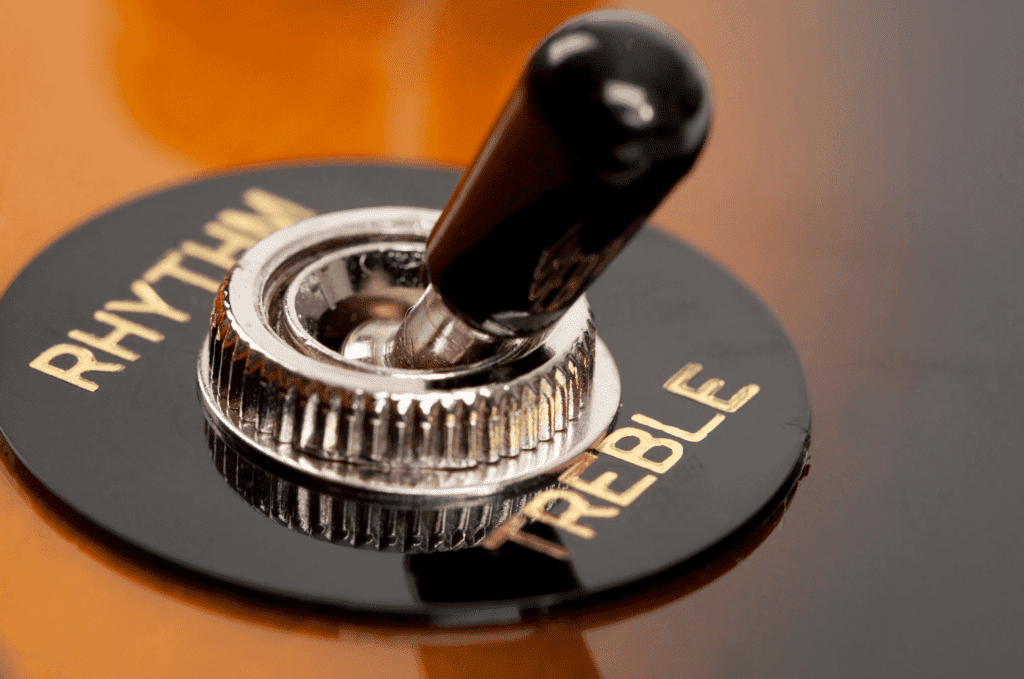
Volume / tone controls
The volume control sets the output level of the guitar, coming into the amp. Lower volume from the guitar gives more headroom, resulting in a wider dynamic range, while a high volume results in a more squish and overdriven sound. The tone knob is usually a low-pass filter, cutting down the high frequencies of the signal.
Guitar knobs can often introduce some noise when turned, this is something you can easily fix by yourself.
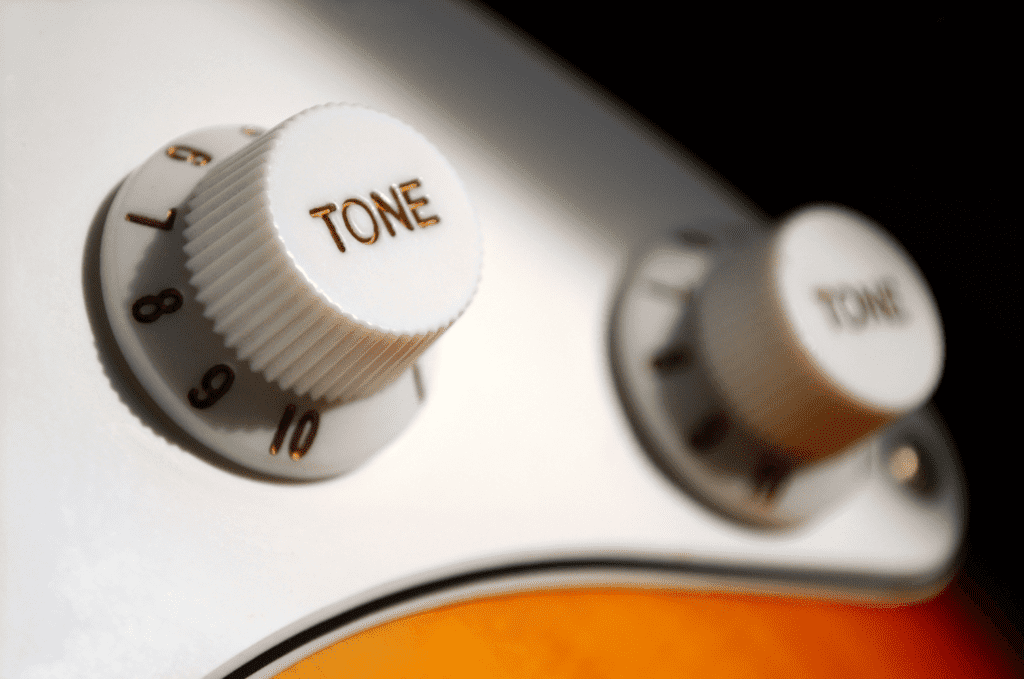
Whammy bar (Tremolo or Vibrato bar)
Let’s start by trying to fix an old mistake. Although both Vibrato and Tremolo are time-based effects, each of them is controlling a different aspect of the sound. Tremolo is a modulation of volume, while Vibrato is a modulation of pitch. A Whammy bar is creating a vibrato effect and NOT a tremolo. Even though the names are mixed up. What a whammy bar does is either stretch or release the strings and create a drastic pitch change. A whammy bar is used for all sorts of sound effects, including the Dive Bomb.
Bridge
The bridge is the part that anchors the strings to the guitar body. There are many different types of guitar bridges. They can be sorted into 3 groups. One group contains fixed bridges and includes the Tune-O-Matic, Hard-tail, and Wraparound. The second group contains the floating tremolos and includes the Floyd Rose, Ibanez’s Edge, and Synchronized bridges. The last group contains bridges that their tremolo system revolves around rotating the saddle, and includes the Bigsby, Dusenberg’s Les Trem, and Stetsbar.
Saddle
The saddle is often a part of the bridge. This is the last point of contact the strings have before they are mounted to the body through the bridge. The length between the saddle and the nut is referred to as the scale length because it sets the length of the playable part of the strings. It’s important to say that sometimes the saddle and the bridge are completely separated (like on a Gibson Les Paul), and sometimes they are different areas of the same part of the guitar (like on a Fender Strat).
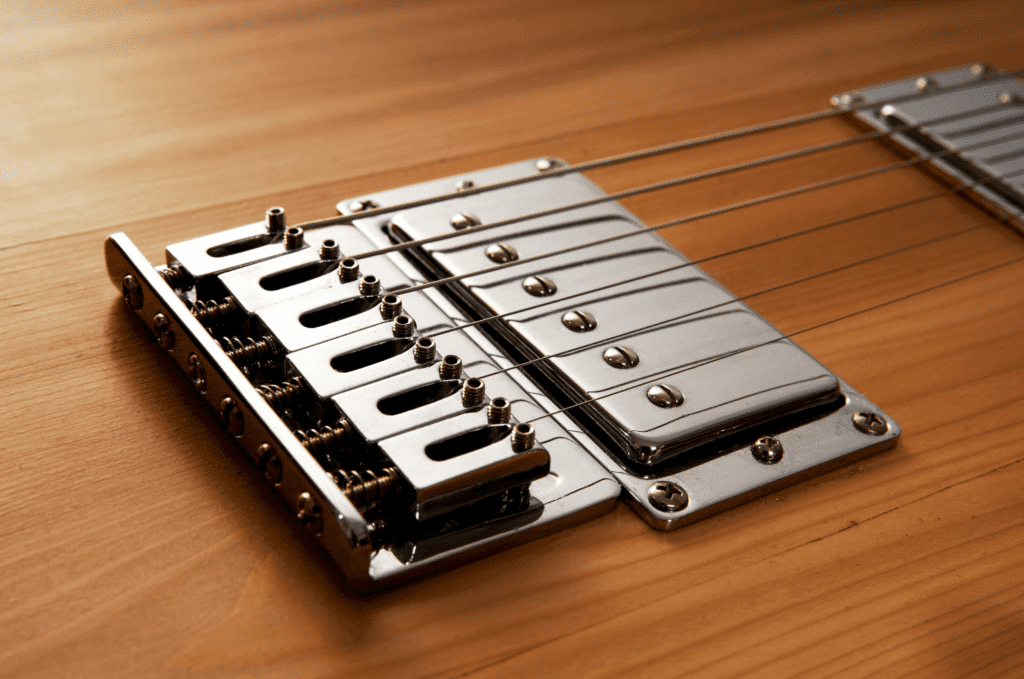
Bridge Pins
On Acoustic guitars, the bridge pins are responsible for holding the strings in place on the bridge. There are two main types of bridge pins: Slotted, and unslotted. The main difference between them is that slotted pins have a grove that the string fits in, making it a bit more comfortable to place, and distributing the pressure more efficiently. Interesting Fact: Bridge pins were developed in Spain and were brought to North America by Christian Frederick Martin. Yes, that Martin. They were invented a few hundred years before either Nylon or Steel strings. Meaning, that even though they are associated today with Steel strings, they were originally intended to be used with Gut strings.
Bridge Pins are most commonly made of plastic but are available in a big variety of materials, such as Cocobolo, Ebony, Bone, TUSQ, and more.
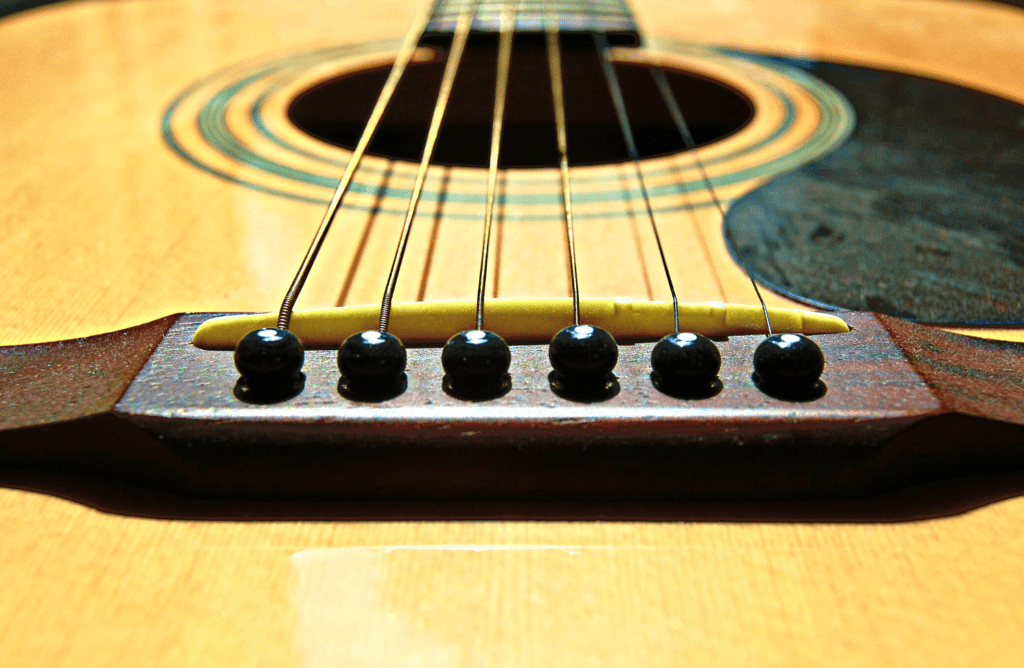
Output jack
The output jack is where you connect the cable to. It transfers all the audio information from the pickups to the amp (if you are using guitar effect pedals, they sit between the guitar and the amp).
Guitar Parts Diagrams
Acoustic Guitar Parts Diagram
Here’s an acoustic guitar parts diagram, click on the image or here to enlarge.
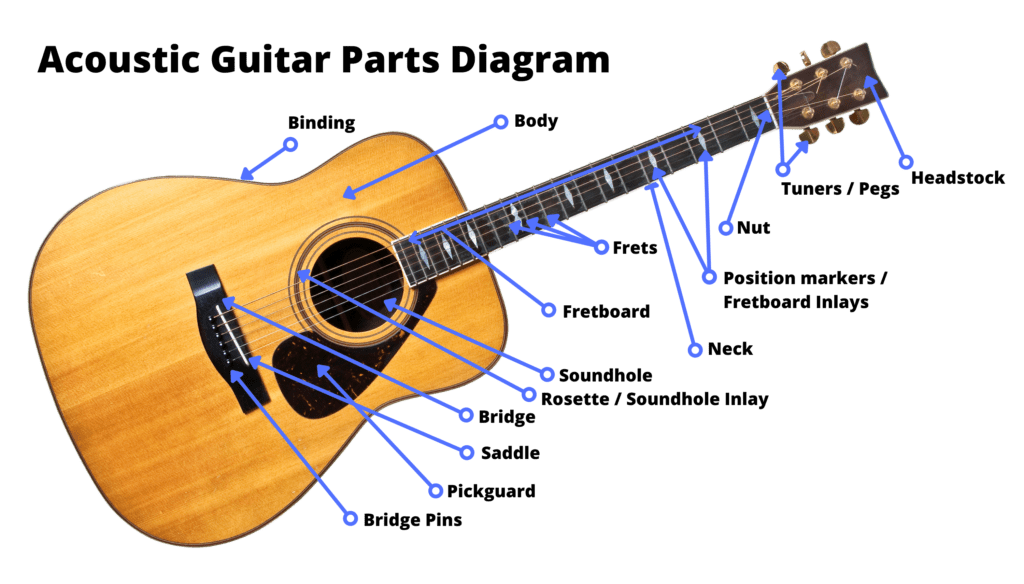
Classical Guitar Parts Diagram
Here’s a classical guitar parts diagram, click on the image or here to enlarge.
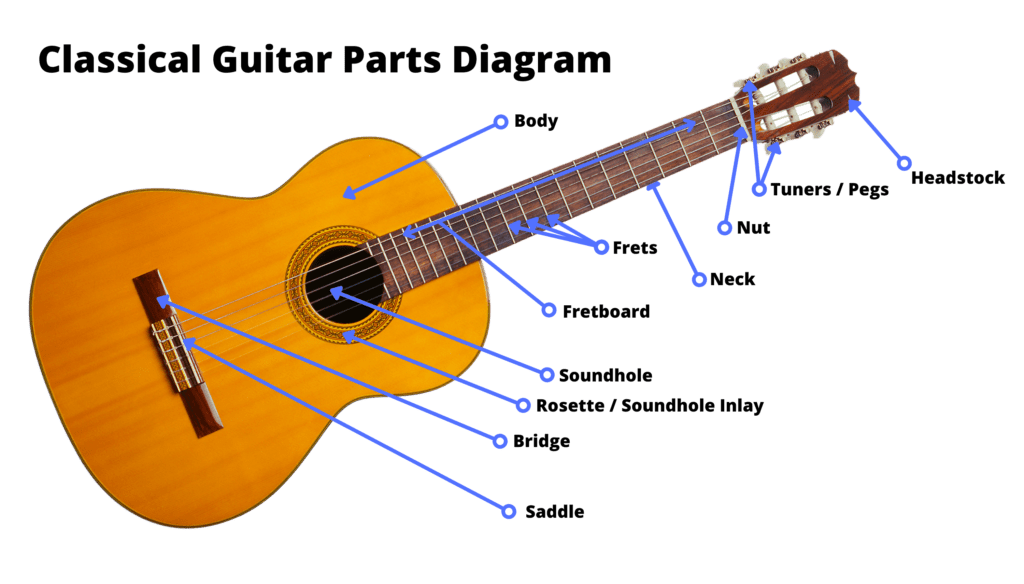
Electric Guitar Parts Diagram
Electric guitar makers have more options to alter the basic design of a basic guitar, which makes them more different from each other than either acoustic or classical guitars. So here are some parts diagrams for the most popular electric guitar shapes.
Les Paul Style Guitar Parts Diagram
Here’s a Les Paul style electric guitar parts diagram, click on the image or here to enlarge.
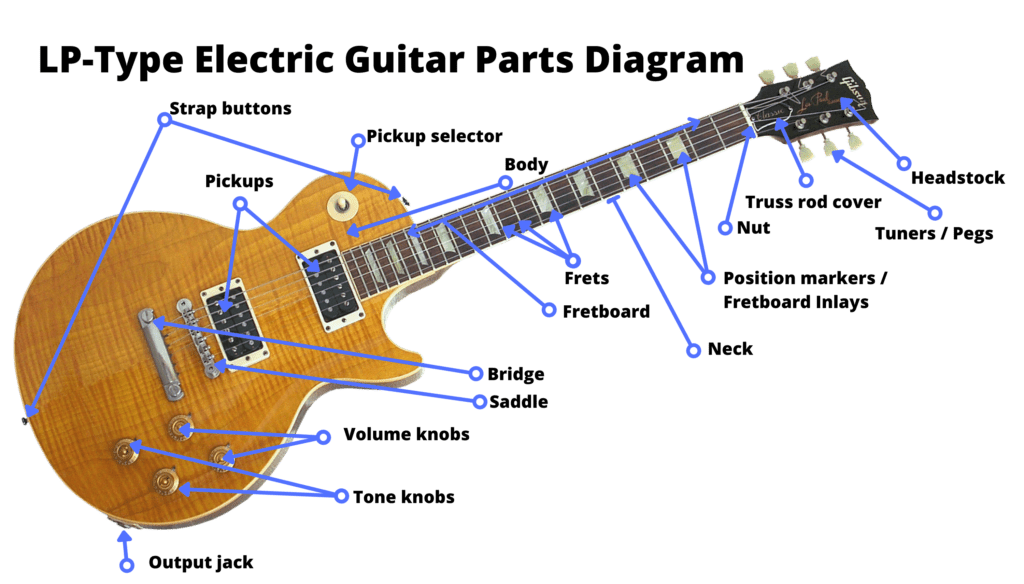
Stratocaster Style Guitar Parts Diagram
Here’s a Stratocaster style electric guitar parts diagram, click on the image or here to enlarge.

Telecaster Style Guitar Parts Diagram
Here’s a Telecaster style electric guitar parts diagram, click on the image or here to enlarge.
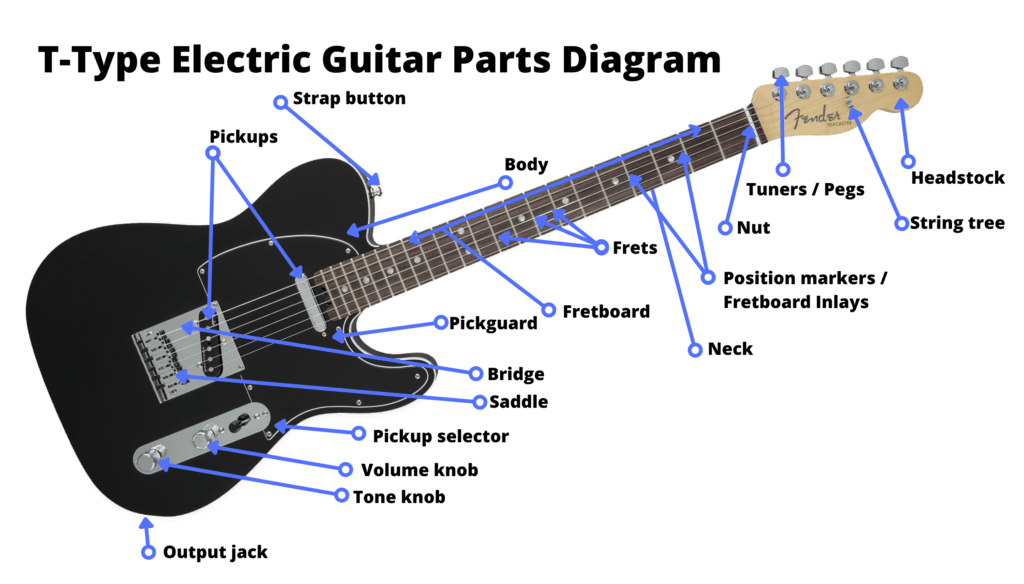
Final Thoughts
As I said in the beginning, guitars become more complex as time goes by. And I’m very excited to see what the future holds for us in that regard. Anyway, I hoped you enjoyed this article, and maybe even learned something new. See you next time!
Frequently Asked Questions
The parts of a guitar are:
1. Headstock
2. Tuning Pegs
3. String Trees (sometimes)
4. Truss Rod (sometimes)
5. Nut
6. Neck
7. Fretboard
8. Frets
9. Position Markers / Inlays
10. Strap Buttons (sometimes)
11. Body
12. Pickguard (sometimes)
13. Soundhole (on classical and acoustic guitars)
14. Rosette (on classical and acoustic guitars)
15. Pickups (on electric guitars, but can be added to acoustic guitars, too)
16. Pickup Selector Switch (electric guitars only)
17. Knobs – Volume / Tone Controls (electric guitars only)
18. Tremolo (electric guitars only)
19. Bridge
20. Saddle
21. Bridge Pins (acoustic guitars only)
22. Output Jack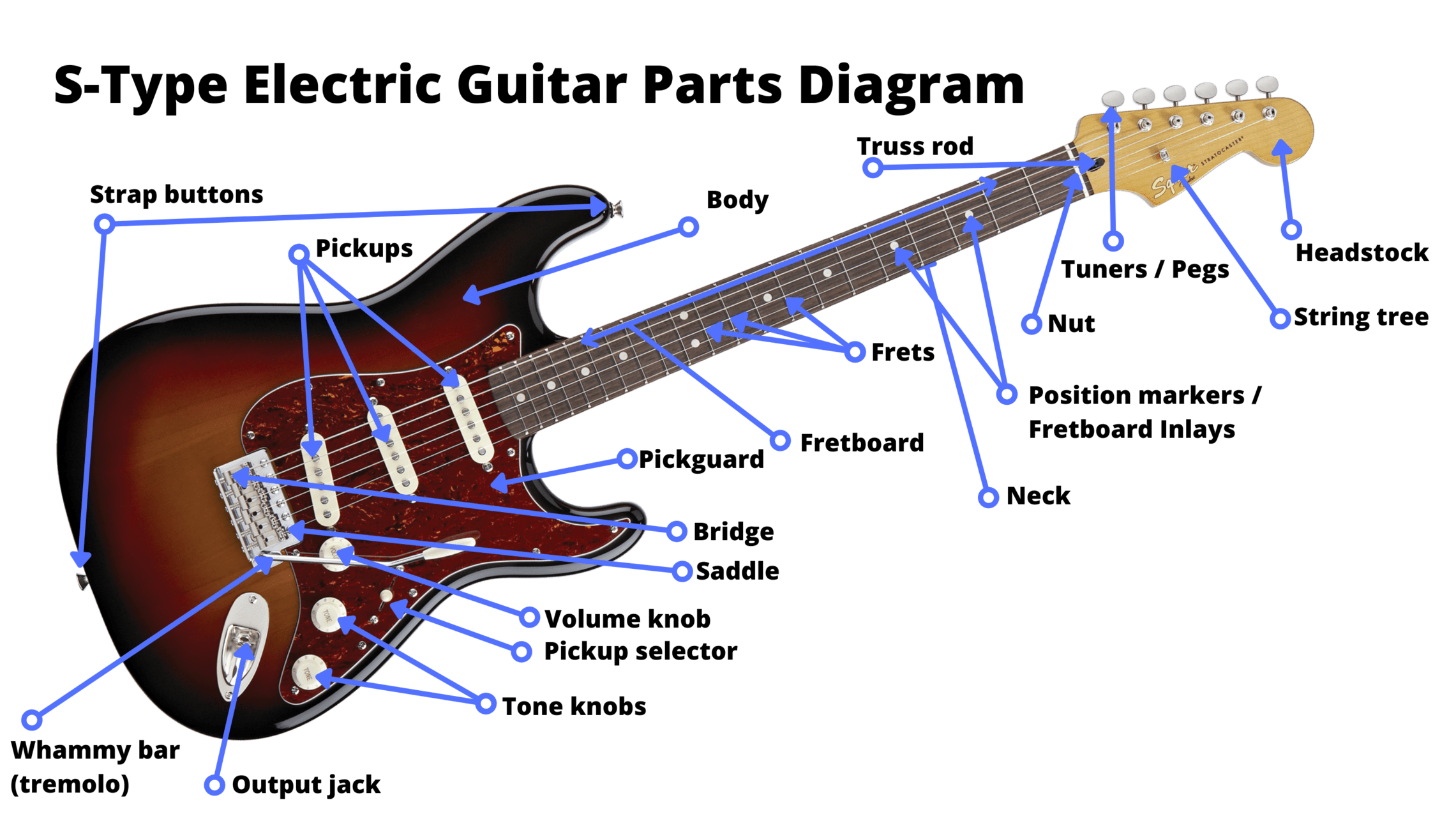
The parts of an acoustic guitar are:
1. Headstock
2. Tuning Pegs
3. String Trees (sometimes)
4. Truss Rod (sometimes)
5. Nut
6. Neck
7. Fretboard
8. Frets
9. Position Markers / Inlays
10. Strap Buttons (sometimes)
11. Body
12. Pickguard (sometimes)
13. Soundhole
14. Rosette
15. Bridge
16. Saddle
17. Bridge Pins
18. Output Jack
The parts of an electric guitar are:
1. Headstock
2. Tuning Pegs
3. String Trees (sometimes)
4. Truss Rod (sometimes)
5. Nut
6. Neck
7. Fretboard
8. Frets
9. Position Markers / Inlays
10. Strap Buttons
11. Body
12. Pickguard (sometimes)
13. Pickups
14. Pickup Selector Switch
15. Knobs – Volume / Tone Controls
16. Tremolo
17. Bridge
18. Saddle
19. Output Jack
The tuning knobs on a guitar’s headstock are called tuning pegs, machine heads or tuning keys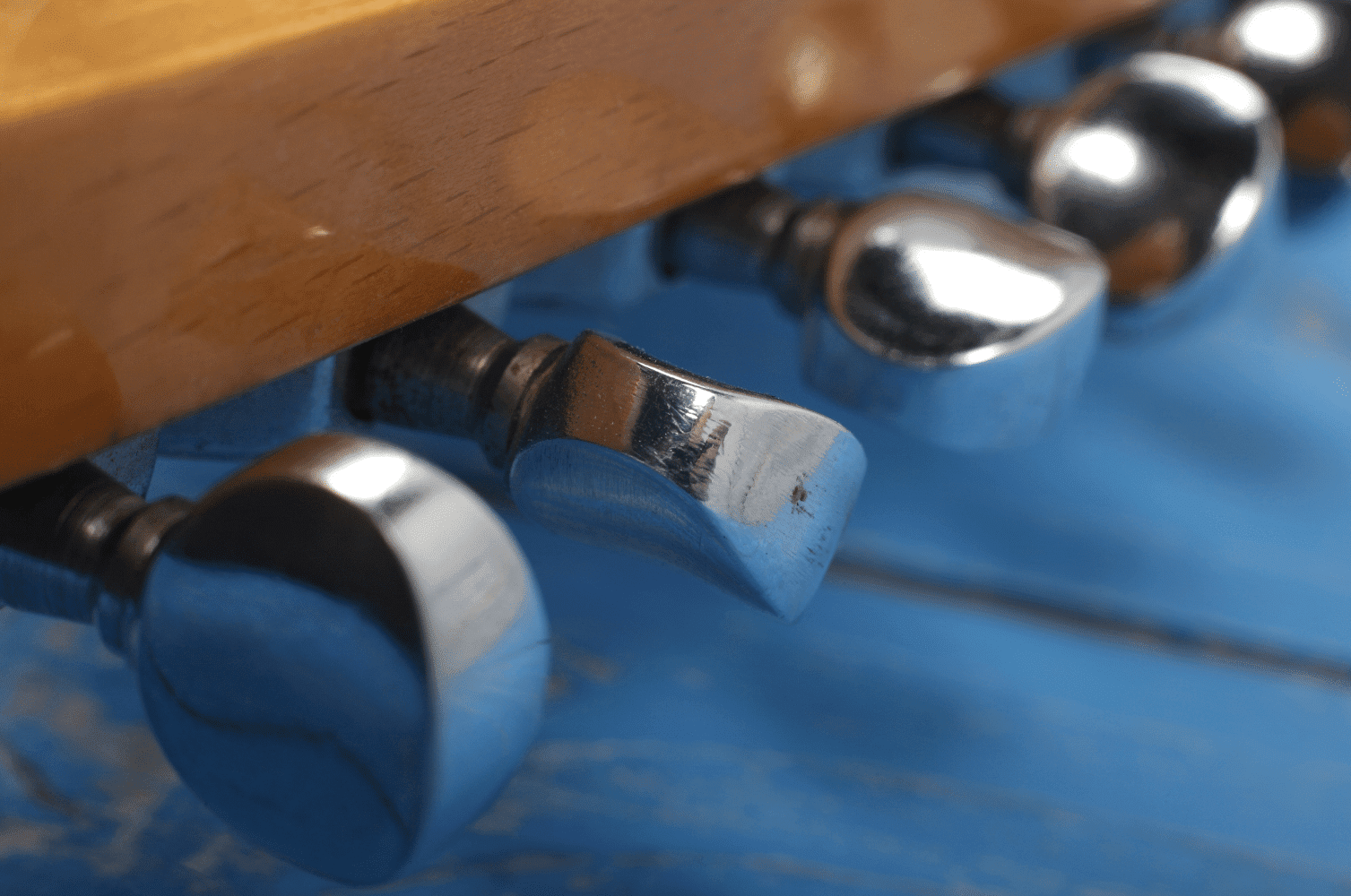
The knobs on a guitar are called Volume and Tone controls.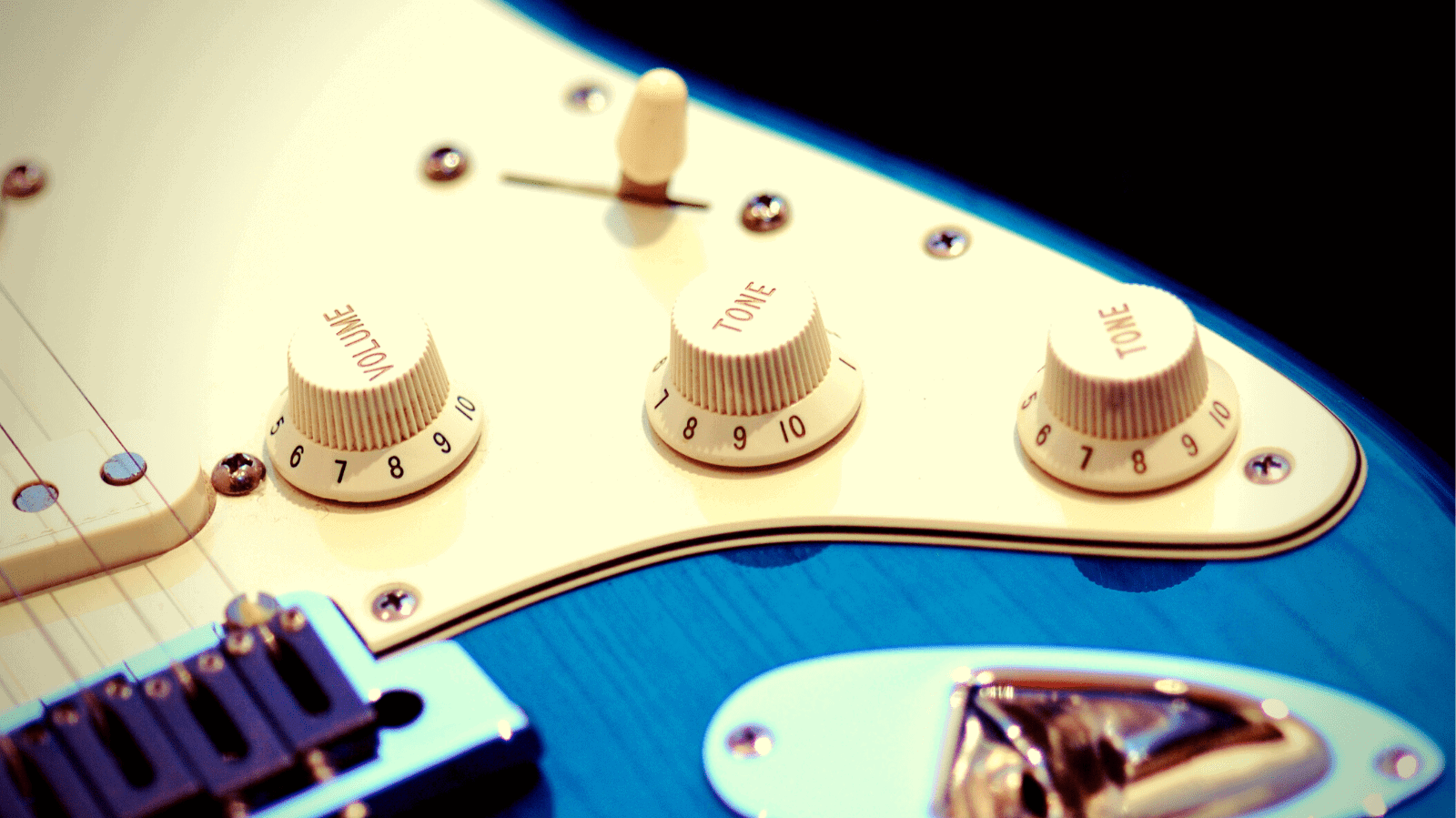
The knobs on an electric guitar are called Volume and Tone controls.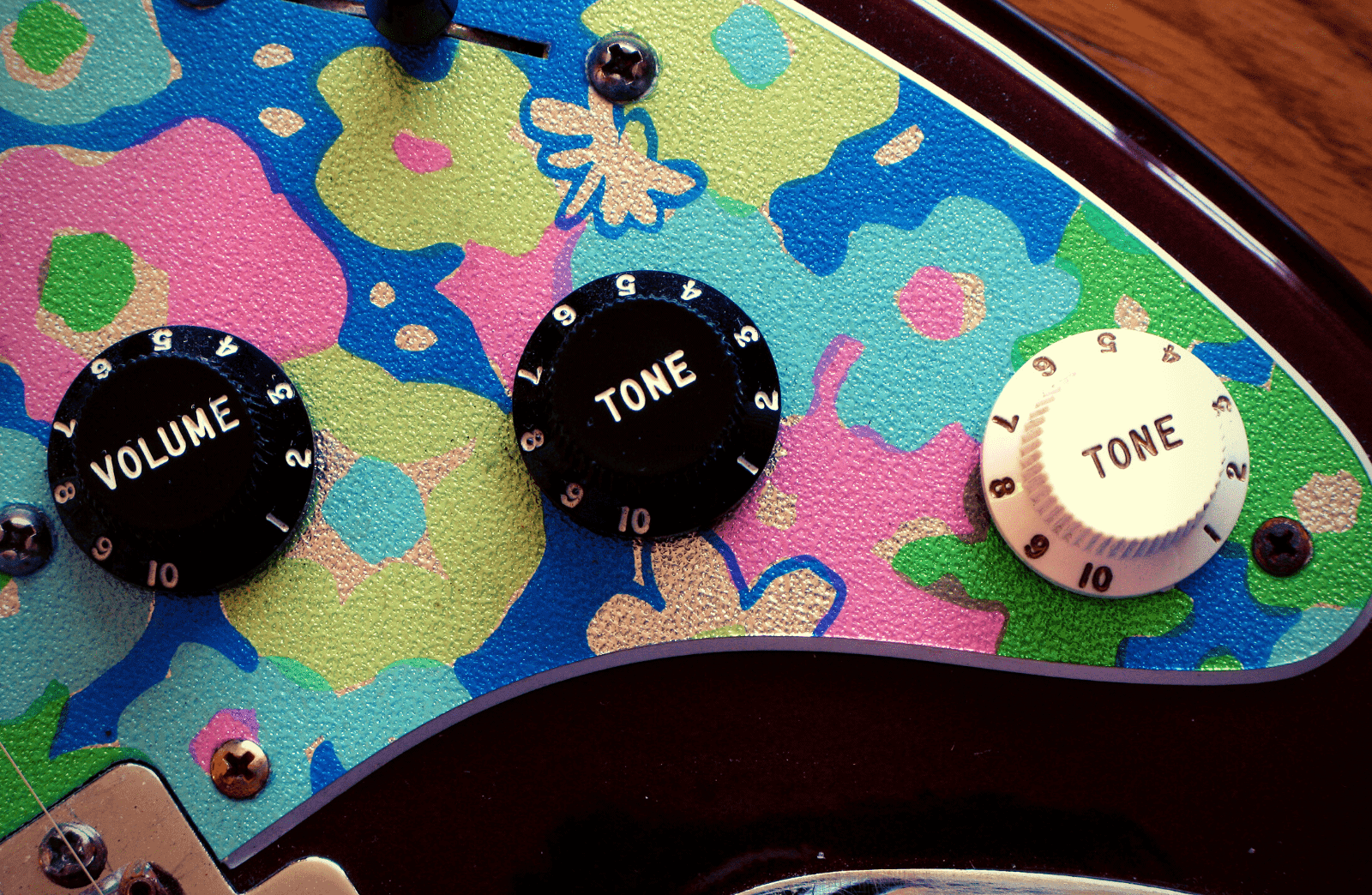
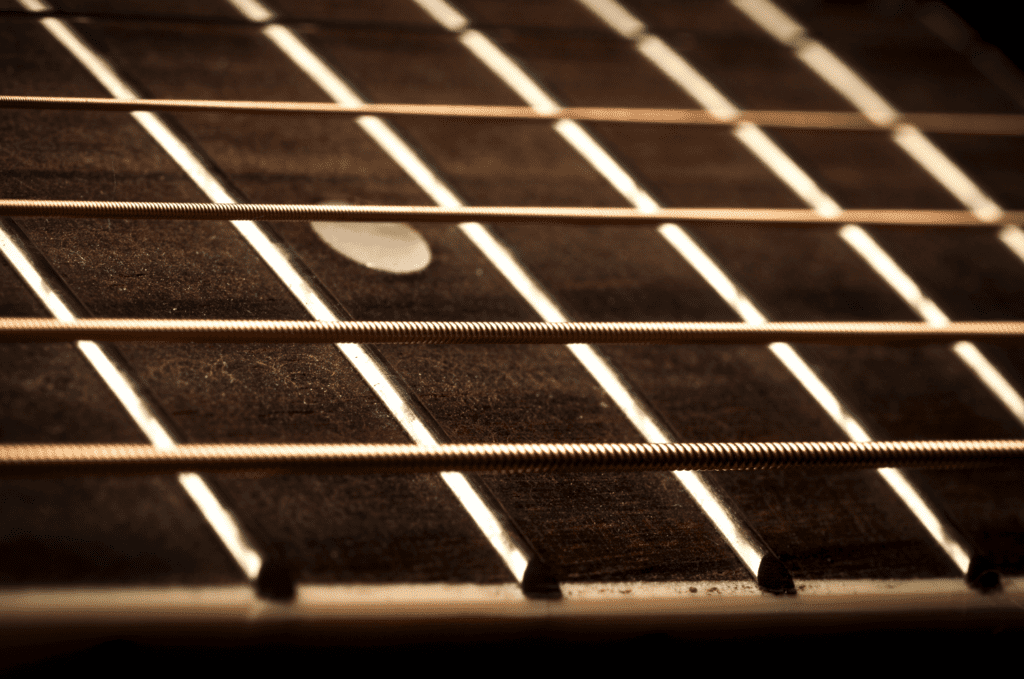
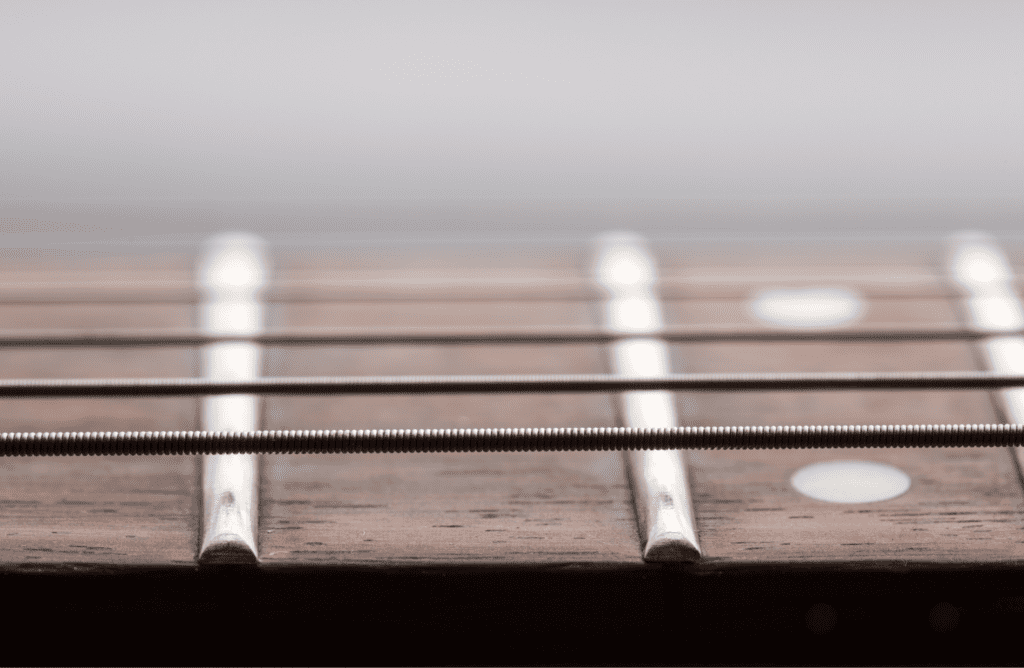
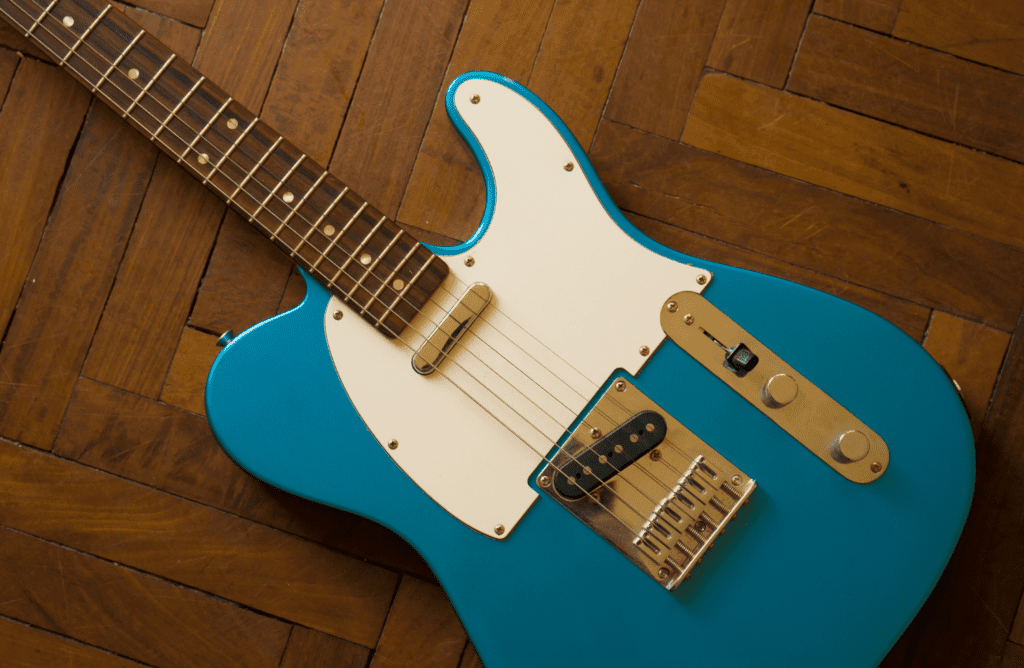



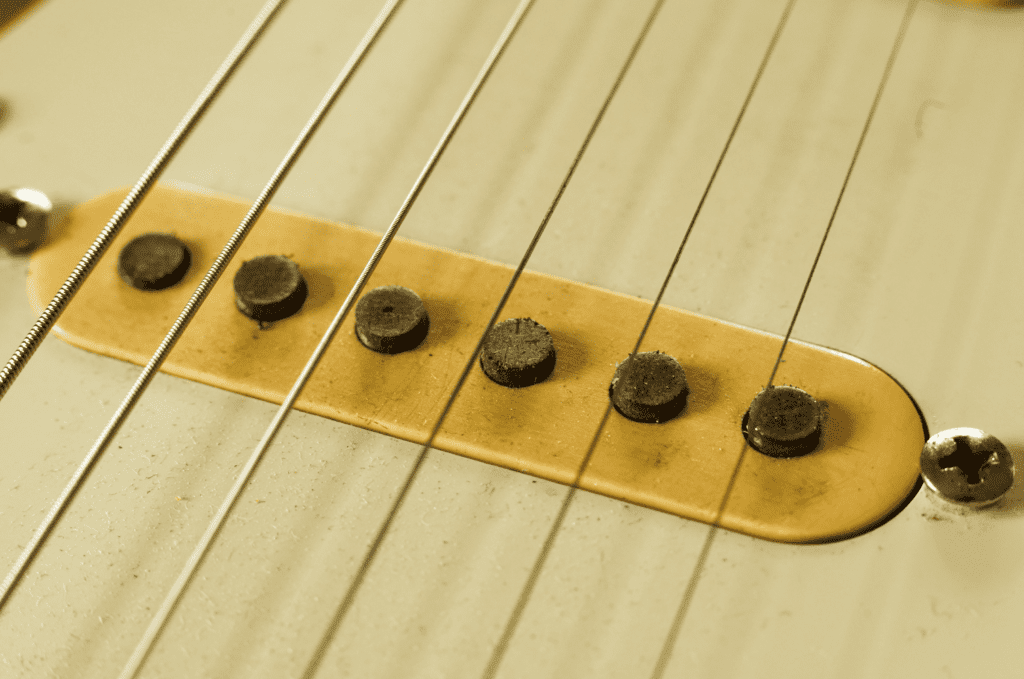
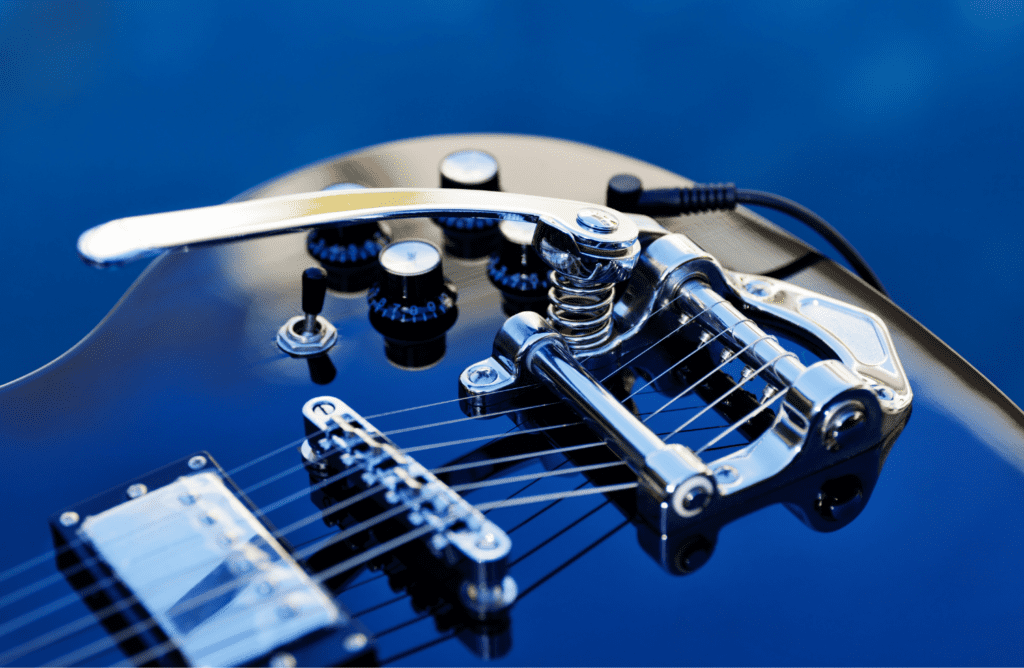
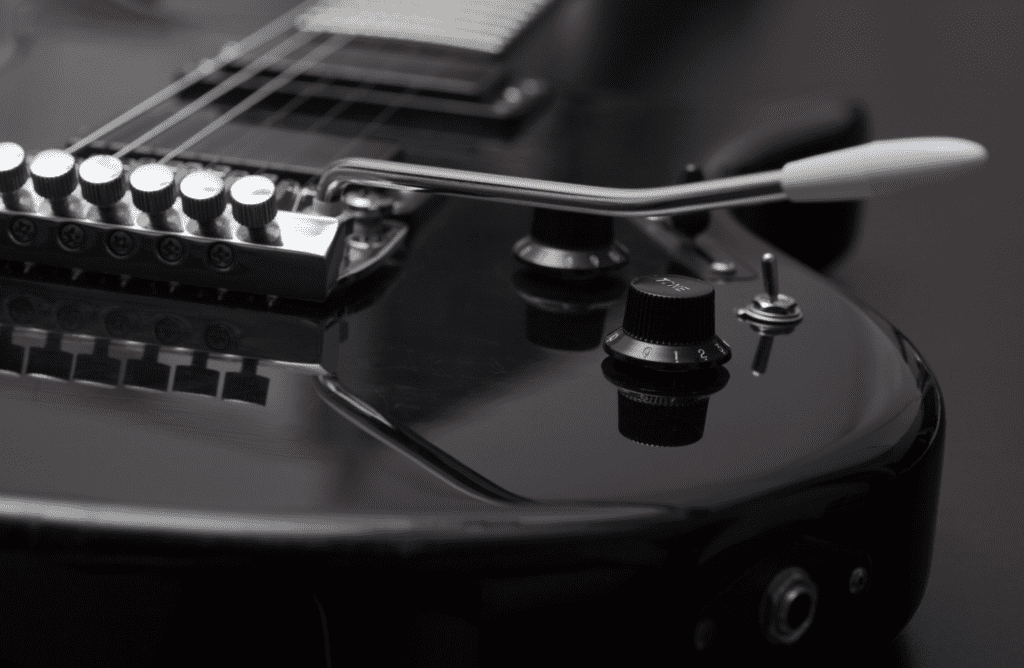


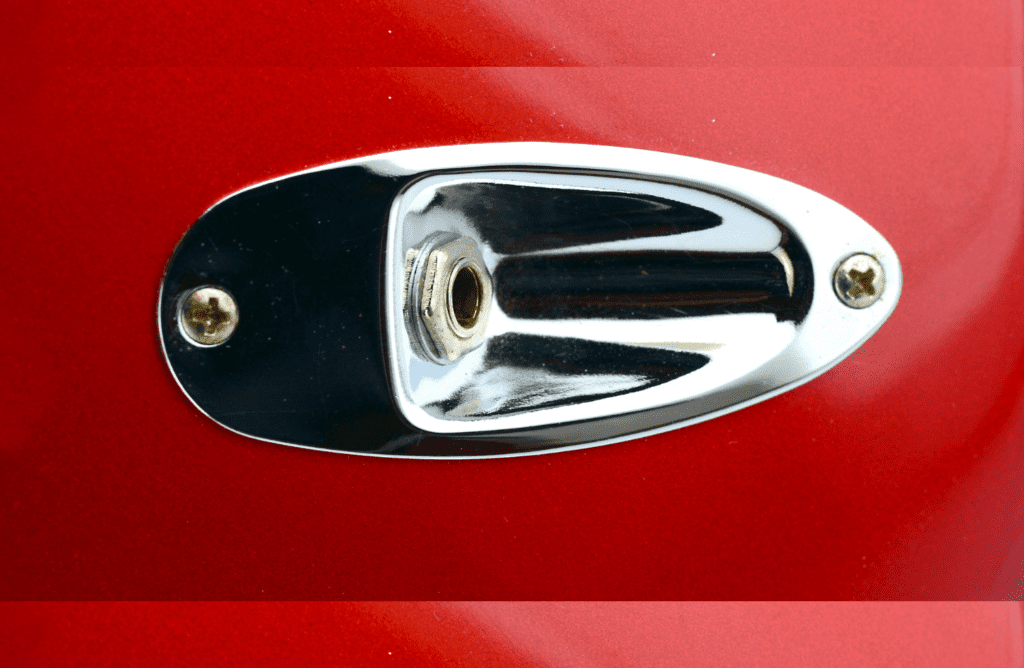
Great post, thank you!